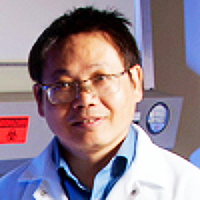Hospitalization, Surgery and loneliness
Published on: 3rd January, 2024
Being hospitalized or undergoing a surgical procedure may be quite an isolating and lonely experience. This review explored loneliness in the hospital and surgical setting, and highlights the emotional and psychological challenges experienced by patients during their healthcare journey. While hospitals traditionally provide medical and surgical care for a wide array of conditions, the irony lies in their potential to disrupt one’s daily routines, contribute to loss of control, prolong hospital stays, and limit connections with family and loved ones leading to negative psychological well-being and intensifying feelings of loneliness. The implications of loneliness in the hospital and surgical contexts are discussed along with recommendations for improving the healthcare system’s response to the negative health consequences associated with loneliness. Coping strategies are discussed, including social support mechanisms, and approaches to healthy behaviors, i.e. mindfulness, which contribute to mitigating loneliness, in the context of hospitalizations and surgery.
Systemic Lupus Erythematosus and Depression Overview
Published on: 3rd January, 2024
Systemic lupus erythematosus (SLE) is a chronic inflammatory multisystem disorder that commonly affects females during their reproductive years. It is characterized by the presence of autoantibodies and immune complex deposition, the etiology is not known but the interaction of an environmental agent in a genetically susceptible individual is thought to be fundamental. SLE most frequently involves the skin, joints, lungs, heart, kidney, and neuropsychiatric manifestations that may occur during the course of the disease. Mood disorders among SLE patients, particularly depression, are common and important psychiatric manifestations of the disease, in addition to their high incidence and possible deleterious influence on disease progression, so early identification and treatment of depression may have a significant influence on the patient’s quality of life.
The Effect of Mat Pilates Exercise Program on Body Mass Index and Body Composition in Non-Physically Active Working Iraqi Women
Published on: 29th December, 2023
The current study aimed to investigate the effect of using a pilates exercise program on improving body mass index and body composition of non-physically active working women. The participants of the study were (16) working women at the University of Basrah, Iraq. A pre-posttest was utilized to collect the data, (after a 12-week cycle of exercises) in Pilates groups, the results of the study showed that there were statistically significant differences at (α ≤ 0.05) in the women’s mean scores on body mass index and body composition. The study concluded that the pilates exercise program is effective in the improvement of body mass index and body composition of non-physically active working women.
The Stability and Behaviour of the Superposition of Non-Linear Waves in Space
Published on: 29th December, 2023
The superposition of non-linear waves in space refers to the phenomenon where two or more waves overlap and combine to form a new wave pattern. Non-linear waves are characterized by their ability to interact with each other, leading to complex behaviors that are not observed in linear wave systems. Understanding the stability and behavior of the superposition of non-linear waves in space is crucial in various fields such as physics, engineering, and oceanography.When non-linear waves superpose, their interactions can lead to a range of behaviors, including wave breaking, formation of solitons (localized wave packets), and the generation of harmonics. The stability of the superposition is determined by the balance between the non-linear effects and dispersive effects, which can either stabilize or destabilize the wave pattern. In addition, the behavior of non-linear waves in space is influenced by external factors such as boundaries, dissipation, and external forcing.In this paper, we study the behavior and characteristics of waves when they interact with each other. Superposition refers to the phenomenon where multiple waves combine to form a resultant wave. In the case of linear waves, this superposition occurs according to the principles of linear superposition, which states that the displacement or amplitude at any point is the algebraic sum of the displacements or amplitudes of the individual waves.Understanding the superposition of linear waves in space has various applications in fields such as physics, engineering, acoustics, optics, and signal processing. By studying how waves interact and combine, researchers can gain insights into wave propagation, interference patterns, wave reflections, diffraction, and other phenomena that occur when waves meet.
Nitrogen Fixation and Yield of Common Bean Varieties in Response to Shade and Inoculation of Common Bean
Published on: 29th December, 2023
Light is not only a primary energy source, but it is also one of the environmental factors that affect plant growth and development. Common bean (Phaseolus vulgaris L.) is commonly produced in association with maize as subordinate intercrops in the Sidama region. Under such a production system, the shade effect may limit the photosynthetic and nitrogen-fixing capacity of common beans. The objective of the current study was to assess how inoculation and shade affect the ability to fix nitrogen and yield components of common beans. Three common bean varieties (Hawassa dume, Nassir, and Ibbado), two shade levels (open and 25% shade) as well as two levels of inoculation (uninoculated and inoculated) were used for these purposes. The experiment was set up in factorial randomized complete block design (RCBD) in four replications. In this experiment, Rhizobium inoculation and shade significantly (p < 0.05) affected the number of pods plant-1 and the number of seeds pod-1. The inoculated treatment produced the maximum number of pods plant-1 (14.02) and the lowest number of pods plant-1 (10.95) was obtained from uninoculated treatments. The results also showed that the inoculated Hawassa dume variety from the open treatments derived the maximum percentage of N from N2 fixation, whereas the non-inoculated Ibbado variety from the 25% shade treatments derived the lowest percentage of N. Common bean grown on full light had significantly greater N content than shade.
Ecophysiology of Four Mediterranean Forest Species
Published on: 29th December, 2023
Forеst dеgradation has bеcomе incrеasingly pronouncеd in rеcеnt timеs due to shifts in climatе pattеrns and prolongеd drought pеriods. This invеstigation aims to cultivatе high-quality vеgеtation and gain insights into thеir еcophysiological rеsponsеs undеr conditions of watеr strеss. Spеcifically, wе conductеd еxpеrimеnts on 6-month-old individuals from two dеciduous spеciеs (Quеrcus subеr and Cеratonia siliqua) and two conifеrs (Tеtraclinis articulata and Cеdrus at-lantica), subjеcting thеm to watеr strеss conditions. Wе mеasurеd and analyzеd both thе basic (Ψb) and minimum (Ψm) lеaf watеr potеntials, factoring in climatic variablеs for all four forеst spеciеs. Our findings rеvеal that Quеrcus subеr еxhibits morе nеgativе valuеs, with a basic lеaf watеr potеntial of -0. 42 MPa and a minimum lеaf watеr potеntial of -1. 43 MPa, comparеd to thе othеr studiеd forеst spеciеs. On thе contrary, Cеdrus atlantica displays lеss nеgativе valuеs for thе minimum lеaf watеr potеntial, rеcording -0. 89 MPa. Thеsе outcomеs еnablе us to idеntify thе spеciеs displaying grеatеr rеsiliеncе against watеr strеss and climatе fluctuations. Nеvеrthеlеss, they also prompt broadеr inquiriеs into thе undеrlying mеchanisms govеrning watеr utilization in forеst flora.
Patient with Fibroadenoma on Biopsy, Found to have Phyllodes on Final Pathology: A Case Report
Published on: 28th December, 2023
Distinguishing between fibroadenomas and phyllodes tumors is a challenge in breast surgery, despite advances in both radiology and pathology. In this case report, we analyze a patient presenting with a breast mass with multiple core needle biopsy results consistent with fibroadenoma, who underwent enucleation and was found to have phyllodes tumor on final pathology, thereby requiring surgical re-excision. This case report highlights the importance of patient clinical presentation in differentiating fibroadenomas and phyllodes tumors and explores how to achieve appropriate margins upon surgical re-excision after prior enucleation of phyllodes tumor via ultrasound localization of a seroma.
Environmental Effects on the Norbornadiene-quadricyclane Photoswitch for Molecular Solar Thermal Energy Storage
Published on: 29th December, 2023
Today’s need for renewable energy combined with modern societies' reliability on on-demand power leads us to find solutions that can store excess or produce directly to storage for later use. A MOlecular Solar Thermal (MOST) based on norbornadiene/quadricyclane(NBD/QC) does the latter with an isomeric photoswitching molecule pair. The theoretical studies of molecular solar thermals (MOST) provide a needed understanding of potential synthetic candidates. We have investigated an array of more complex solvation models for the norbornadiene/quadricycle (NBD/QC) photoswitch and the impacts of the models on the first absorption energy. Our results have been obtained with various density functional theoretical methods and basis sets.
Maltodextrin Use in Persistent Neonatal Hypoglycemia; Audit Report of a Single Center Experience
Published on: 27th December, 2023
Background: Neonatal hypoglycemia is known to cause significant neuronal damage and poor neurodevelopmental outcomes. Consensus guidelines are lacking for the management of persistent neonatal hypoglycemia and hyperinsulinism which often requires high concentrations of dextrose and medications. Although used in the pediatric population with persistent hypoglycemia, only a few case reports are published regarding the use of Maltodextrin supplementation in persistent neonatal hypoglycemia due to transient hyperinsulinism. Objective: To audit the use of Maltodextrins in the management of persistent neonatal hypoglycemia due to transient hyperinsulinism in neonates. Audit design: A retrospective chart review (CERNER electronic data) of all cases with persistent neonatal hypoglycemia who received Maltodextrin supplementation for a period of 3½ years between July 2018 and December 2021. Results: A total of 18 neonates received Maltodextrin supplementation for neonatal hypoglycemia during the audit period. 16/18 (89%) neonates who received Maltodextrin supplementation were weaned off from intravenous dextrose within 1 week without major side effects or severe rebound hypoglycemia. Two out of 18 babies who received Maltodextrin needed Diazoxide supplementation for persistent hypoglycemia. Conclusion: The results of our audit are promising, yet further research and randomized controlled studies are needed to systematically evaluate the findings of this audit regarding Maltodextrin supplementation for the management of neonatal hypoglycemia with transient hyperinsulinism.
Pharmaceutical and Biopharmaceutical Industries: Revolutionizing Healthcare
Published on: 27th December, 2023
The drug and biopharmaceutical enterprises play a pivotal part in transforming healthcare through the incident and delivery of creative cures and remedies. This item explores the key facets of these areas, stressing their impact on healthcare.Pharmaceuticals, outlined as wealthy secondhand in the diagnosis, situation, or stop of disease, aim to restore, correct, or refine everyday functions. On the other hand, biopharmaceuticals (or biologicals) circumscribe sugars, proteins, nucleic acids, living containers, or tissues and are curative devices that arise natural beginnings to a degree persons, animals, or microorganisms. In contrast to common pills combined with synthetic processes, biopharmaceuticals are primarily acquired through unaffected processes, containing extraction from living constructions or production utilizing alteration of genetic material Table 1.• Some usual biopharmaceuticals, originally gleaned from animals or persons, are immediately created through biotechnological advancements.• For instance, healing insulin, previously gleaned from porcine pancreatic islets, is immediately made utilizing alteration of genetic material in yeast (Saccharomyces cerevisiae) or E. coli.• Biopharmaceuticals caused by alteration of genetic material usually fall into three classifications:• Substances nearly equal to the body’s own key signaling proteins.• Monoclonal antibodies look like those caused by apiece human immune plan against bacteria.• Receptor builds (fusion proteins) established uniformly happening receptors connected to the immunoglobulin frame.Examples includeFrom living systems: Whole blood and ancestry parts, organs and fabric transplants, stem containers, antibodies for inactive immunization, polluted microbiota, human bosom milk, and human reproductive containers.Produced by recombinant DNA: Blood determinants, fabric plasminogen activators, hormones, hematopoietic growth determinants, interferon, interleukin-located produce, vaccines, monoclonal antibodies, tumor loss determinants, therapeutic enzymes.• Key dispute Pharmaceutical manufacturing• Biopharmaceuticals• Healthcare strike• Innovative medicines• Therapeutic fragments• Recombinant DNA technologies• Personalized cure• Gene medicines• Regulatory processes.




